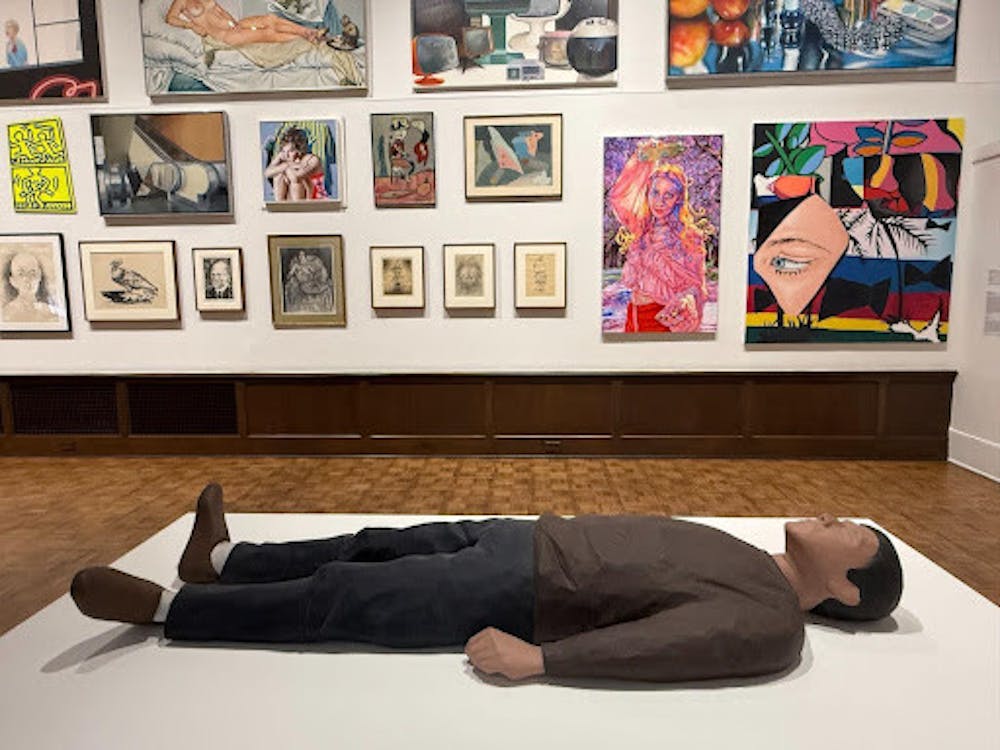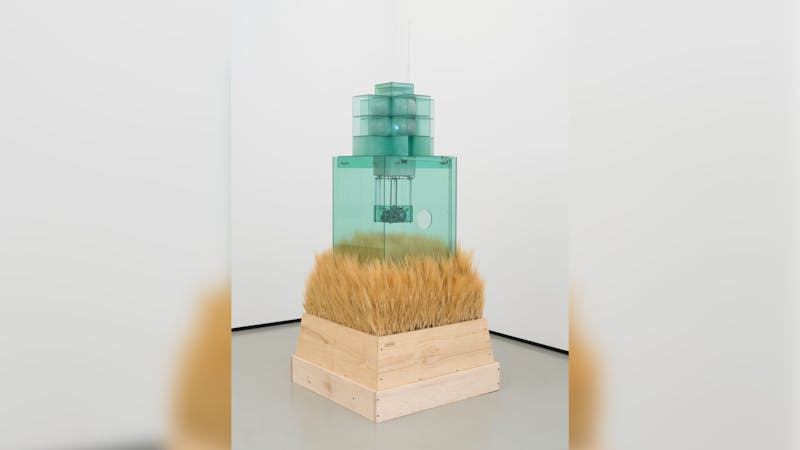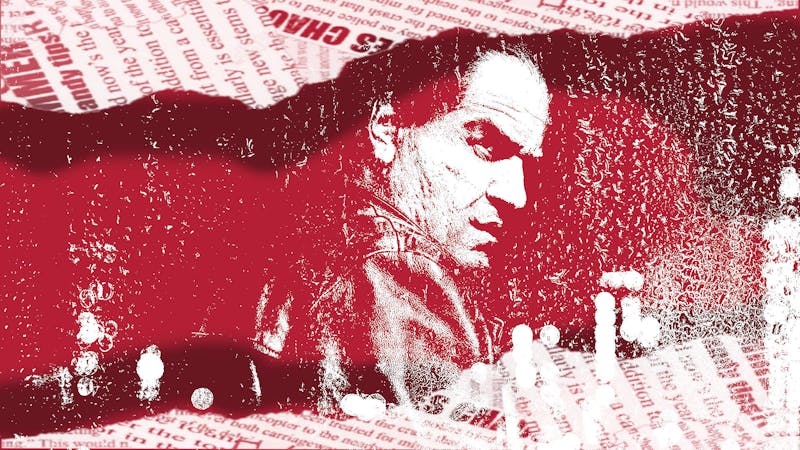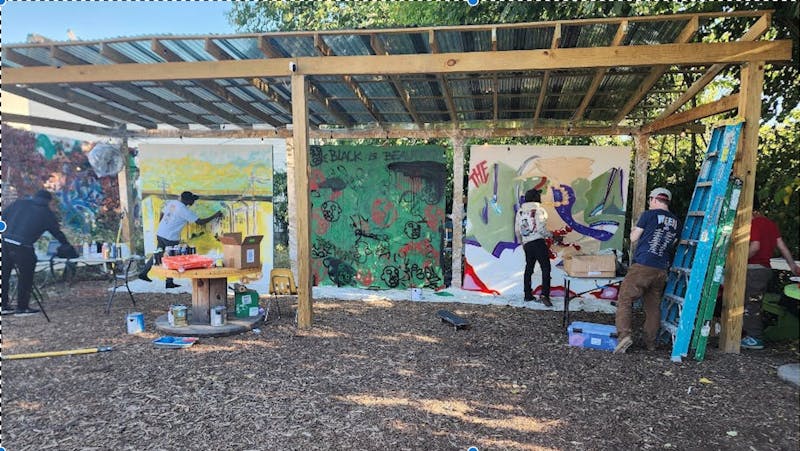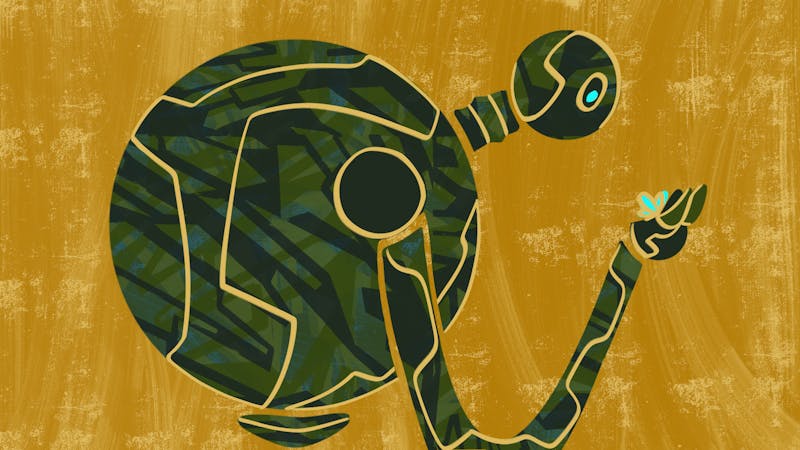Tucked behind the brick–and–terra–cotta Venetian entrance of the Fisher Fine Arts Library, the new exhibition After Modernism: Selections from the Neumann Family Collection is finally on view at the Arthur Ross Gallery and will remain on view through March 2.
An examination of contemporary art’s purpose and future trajectory, After Modernism captures a wide range of works stretching from the 20th century to the modern day. Upon entering, I am immediately dizzied by the vast menagerie of media—paintings of televisions, naked figures, and observational sketches of birds filling the large, blank walls. These are contrasted by a riddled elliptical tower placed front and center in the exhibition.
At first glance, the selection of these works seems arbitrary. However, the vision of curator Gwendolyn DuBois Shaw—faculty director of the Arthur Ross Gallery and acclaimed professor of American art history—becomes clear as I piece together the elements of her creative direction: the cognitive tensions that characterize our present moment.
After Modernism encompasses the works of the modernist era. The Neumann Family Collection dates back to 1948 and includes over 3,000 artworks, and the exhibition draws from this vast collection to trace the evolution of modern art to the present day. What initially seemed like an overwhelming visual experience soon unfolded as a clear timeline of modern art history—a tradition of social critique—transitioning from the iconic figures of Pablo Picasso and Henri Matisse to ultracontemporary artists like Allison Zuckerman and Patricia Renee' Thomas, whose works date as recently as 2022. The exhibition features a dynamic mix of street art, postmodernism, and conceptual art.
The exhibition investigates contemporary art’s ability to capture the present moment despite its permanent shifting mobility. Shaw’s artistic vision reflects her research practice: the role of race, gender, sexuality, and class in the United States, Latin America, and the Caribbean. Her past exhibitions feature American, Polynesian, Cuban, and Brazilian artists drawing from both historical and contemporary perspectives. She also implements works that explore intangible ideas centered on personal, subjective experience.
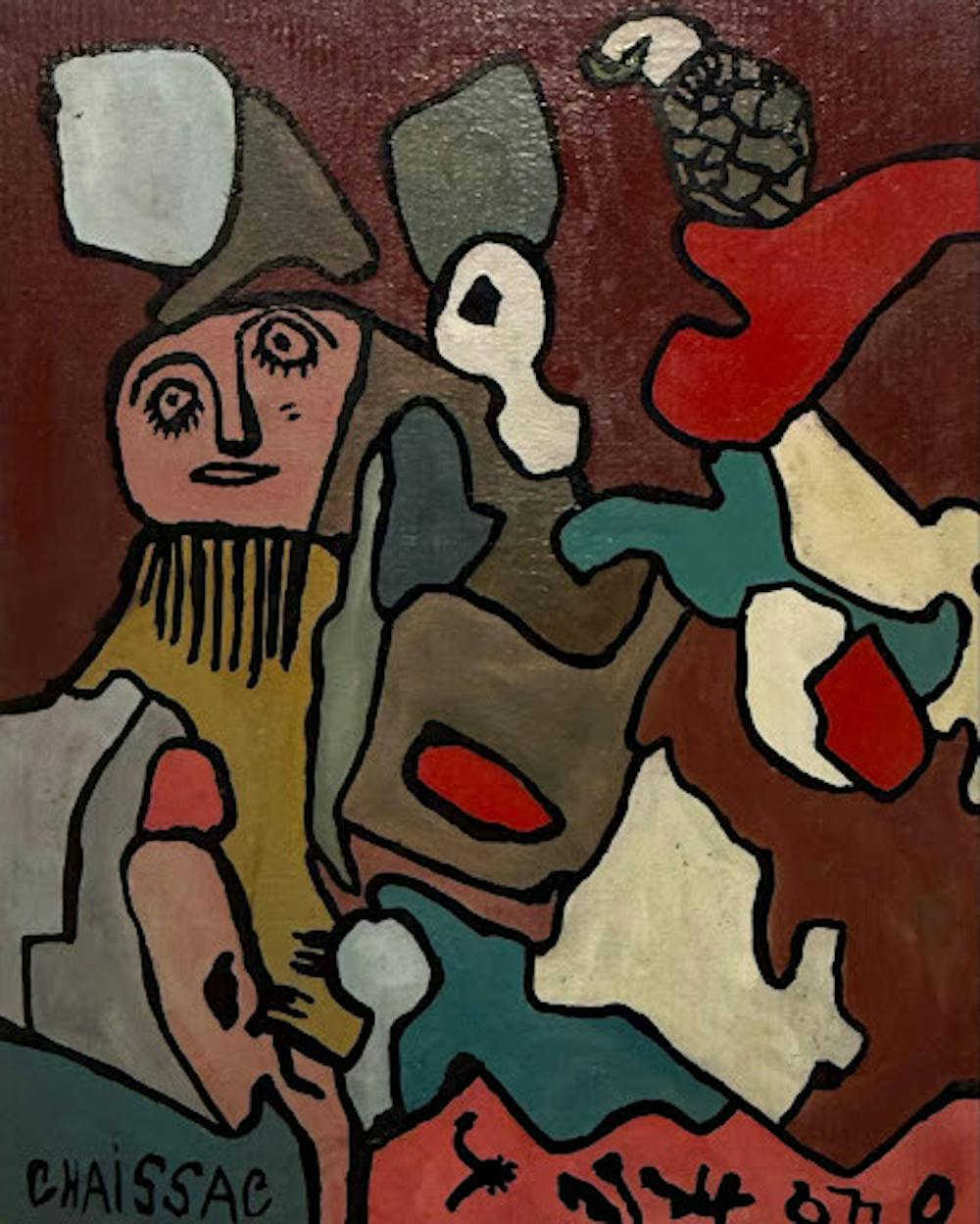
Picasso’s Angry Owl (1953) pays homage to his experience rescuing and nursing an injured owl back to health while working in Antibes, France in 1946. This piece is part of a series of works in which Picasso depicts owls, a recurring symbol of both strength and vulnerability. The angry owl in question, fractured into fluid blobs marked by stark black contours, is narrowly balancing itself on its two spindly legs. The owl’s face, uncanny and humanlike, stares back with a craned neck and what appear to be strings of hair pooling at its chin. Its fragile, wavering form betrays a sense of impermanence, a quiet delicacy, as if teetering on the brink of collapse. The owl’s dissipation contends with its desire to remain grounded, a nod to modernism’s obsession with the transient.
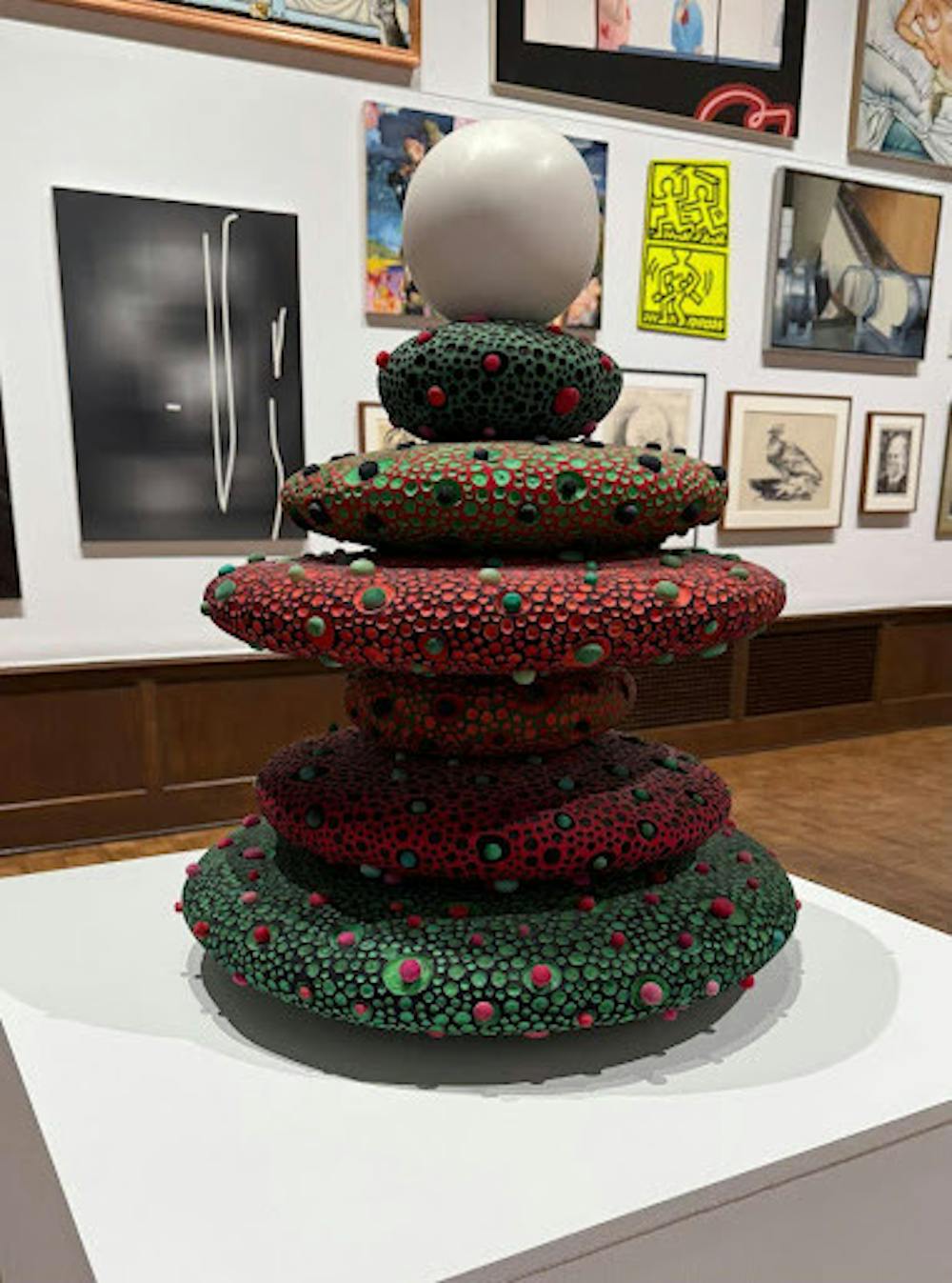
Matthew Ronay’s Stacked Ellipsoid Cairn with Pearl (2015) is a basswood sculpture coated with gouache and shellac–based primer, giving it a textured, stain–blocked finish. The surface appears to be punctured by countless tiny spokes, forming the pattern of a million peering eyeballs or small gateways opening into a nightmarish realm of writhing flesh. Atop the chaotic form rests a single, shiny pearl, its purity sharply contrasting with the vibrant red–and–green, almost grotesque, base. Ronay, who is red–green colorblind, chose these colors because, to him, they appear interchangeable. He notes that the pearl—a symbol of clarity amid instability—resembles a gateway to connection with the universe, a vision he experienced during one of his meditations. Though more carnal than the owl, this work grapples with a similar tension: tranquility in the wake of chaos.
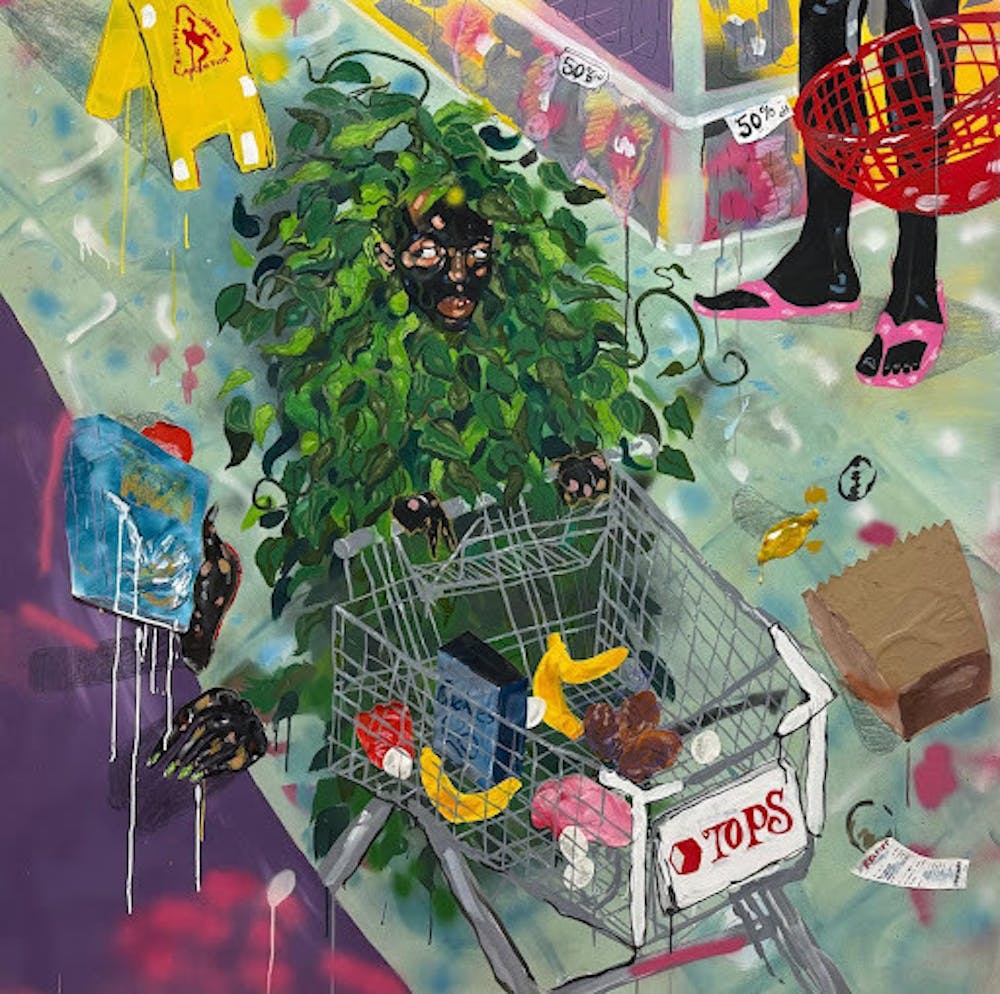
Patricia Renee' Thomas’ Smart Shopper (2022) is a collage, combining spray paint, oil, and acrylic to depict a dark–skinned shopper draped in a cloak of sprawling leaves. The work is set in the Tops Friendly Markets grocery store in Buffalo, N.Y.—the site of a racially motivated mass shooting in 2022. The shooter, then–19–year–old white man Payton Gendron, pleaded guilty to ten counts of first–degree murder and is now serving a life sentence without parole. Drenched in anxiety, the shopper peruses an aisle of the store, surrounded by grocery scraps—a shopping bag, old produce, and a receipt. By embodying hypervisibility and racial profiling, the artist reflects on the fear that has been inflicted by the growth of white nationalist terror, a magnification of America's still racist social underpinnings. A “wet floor” sign marks the slippery surface the shopper navigates to highlight her precarious circumstance. She’s forced to wear black paint to mask her identity, but the garish leaves stick out against the ashy background. Her camouflage captures the visceral experience of navigating life under threat.
Modernism as a movement has long been concerned with capturing the present moment. A critical exploration of modernism’s current state, including its versatility and sensory investigations into specific moments, After Modernism offers a glimpse into the fragmentation of experience.
